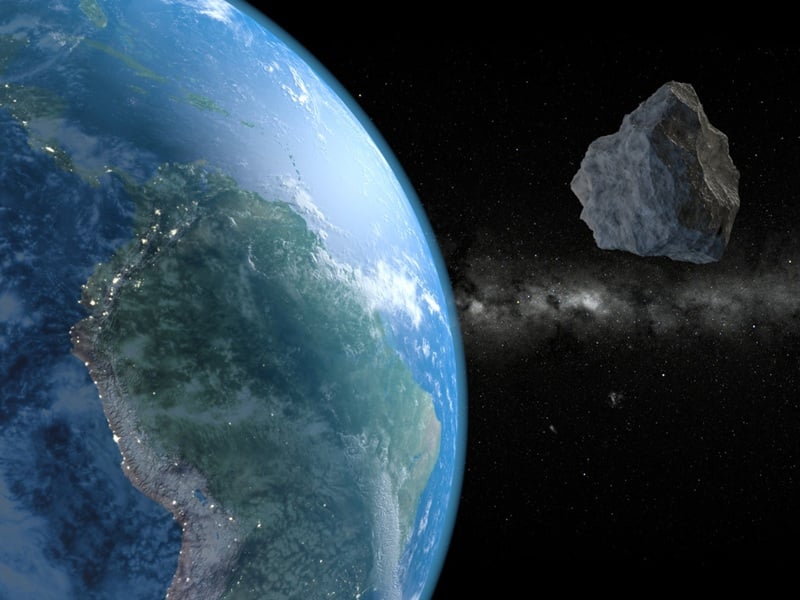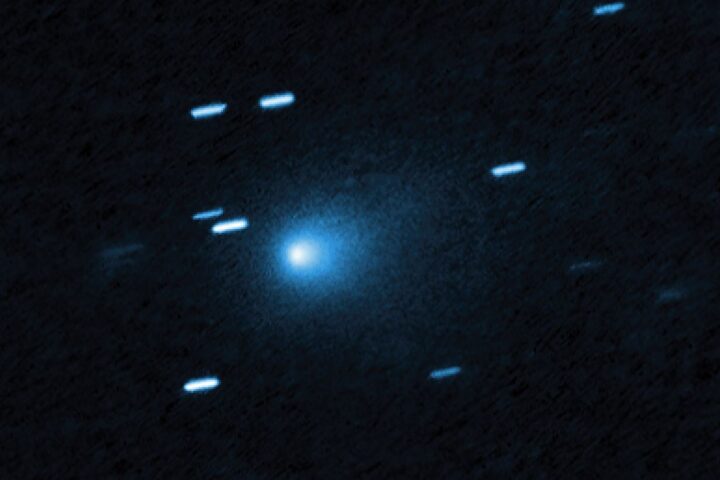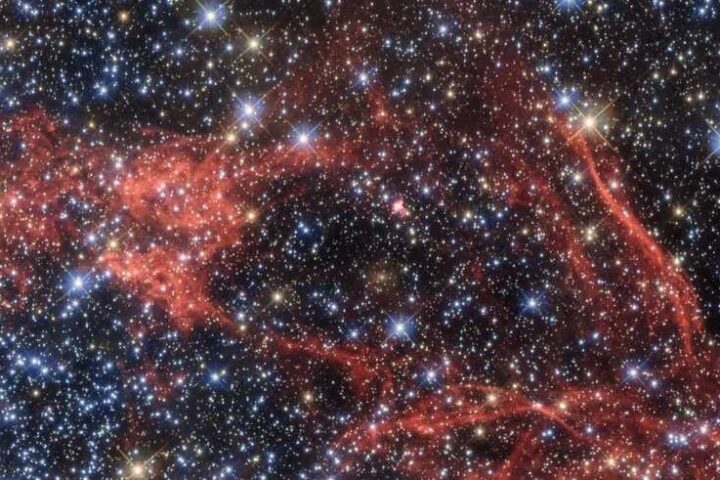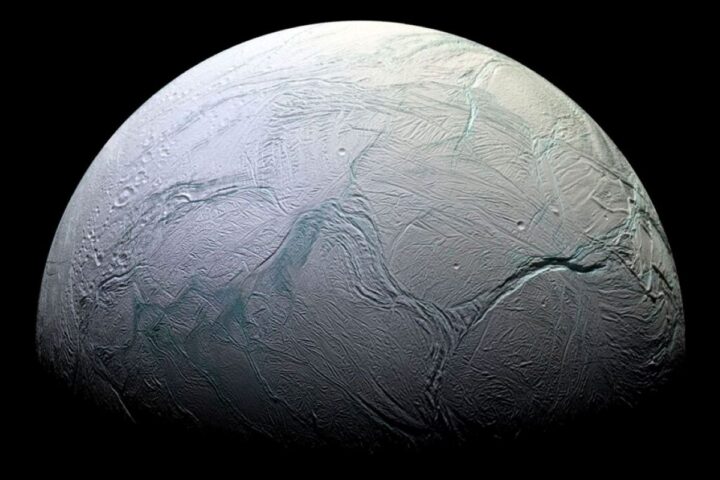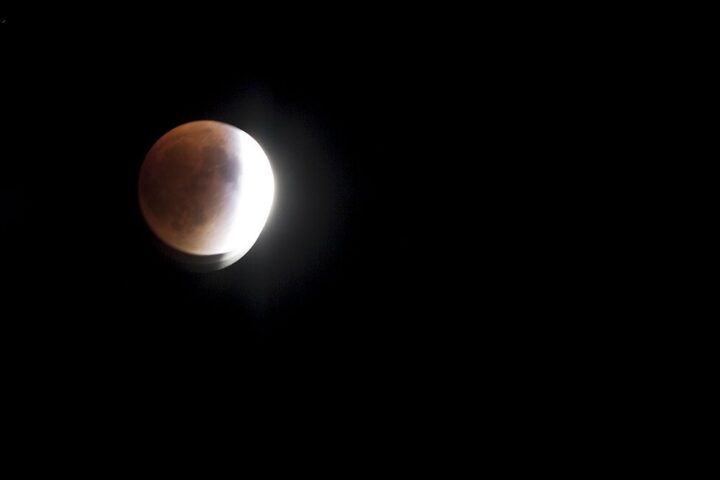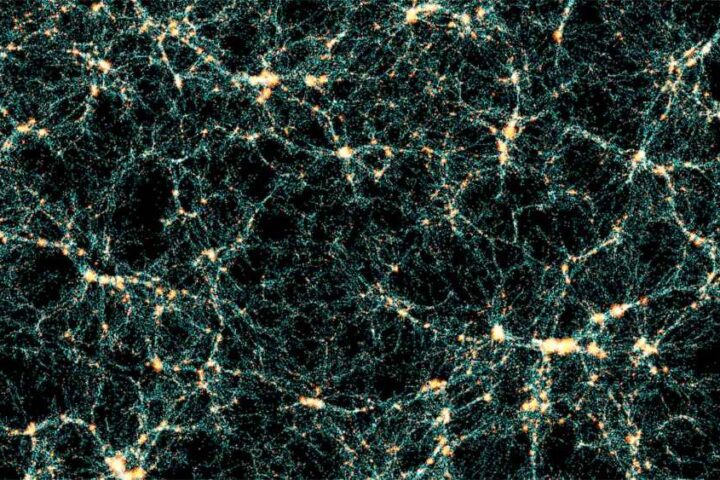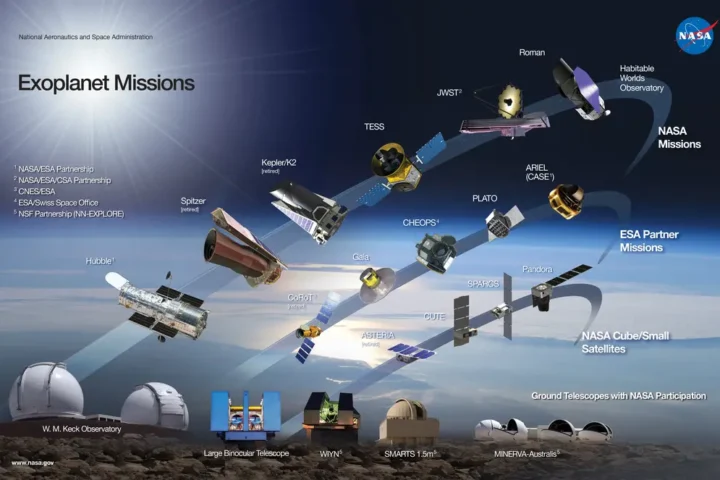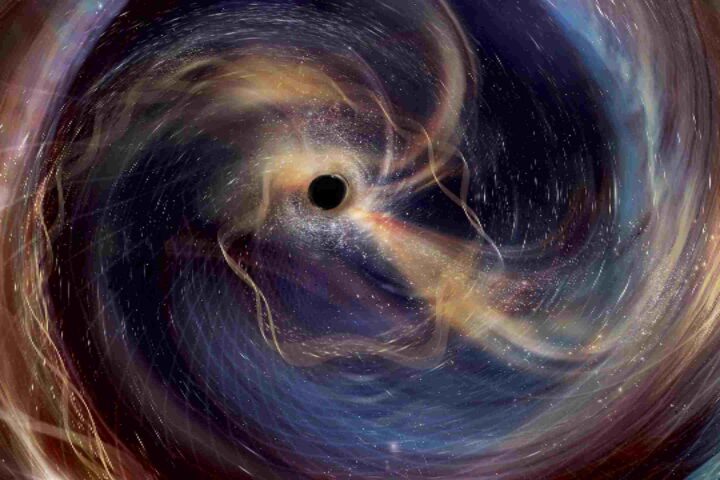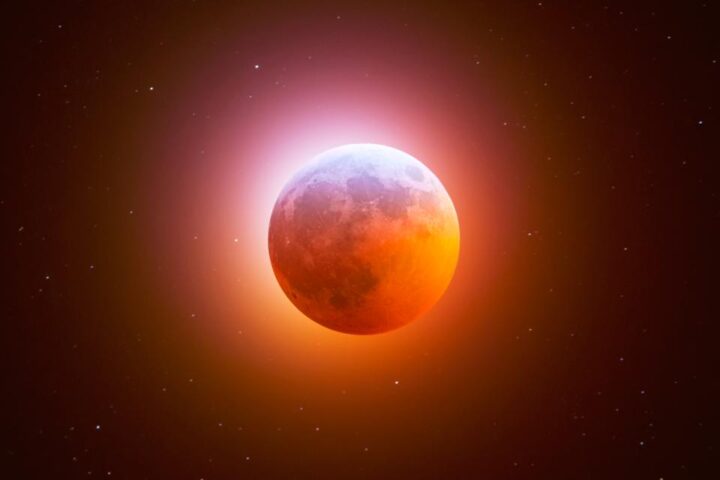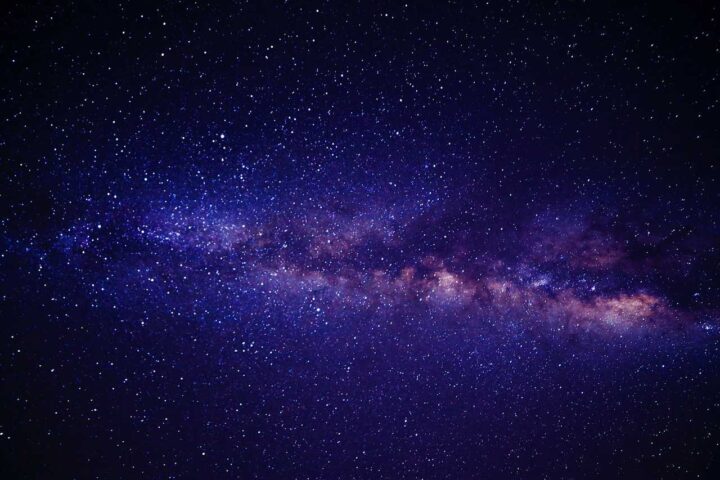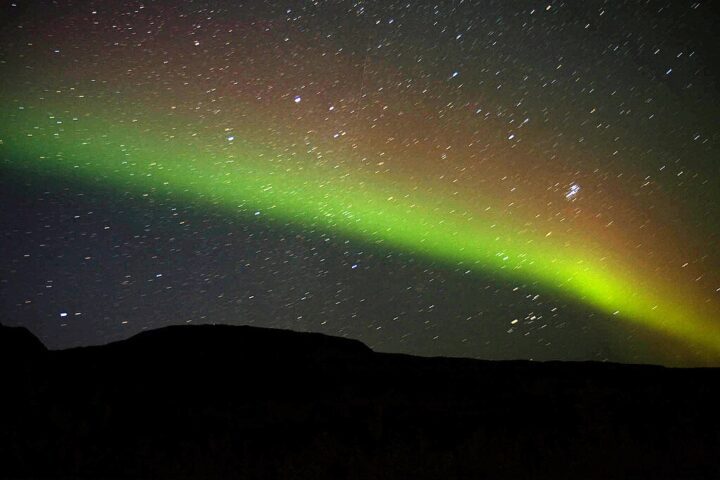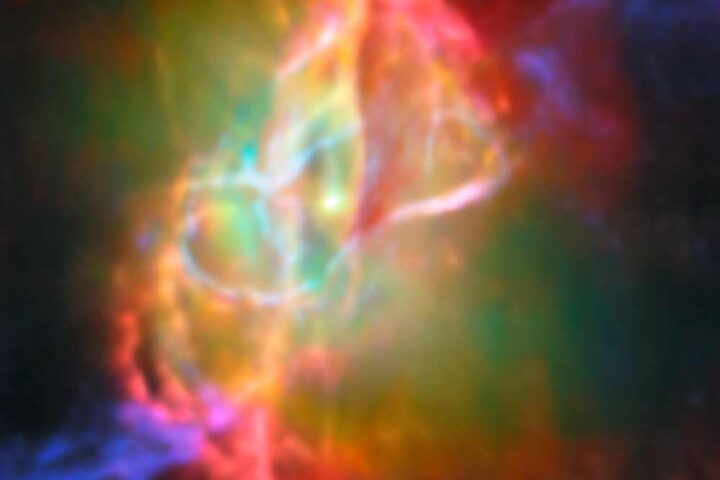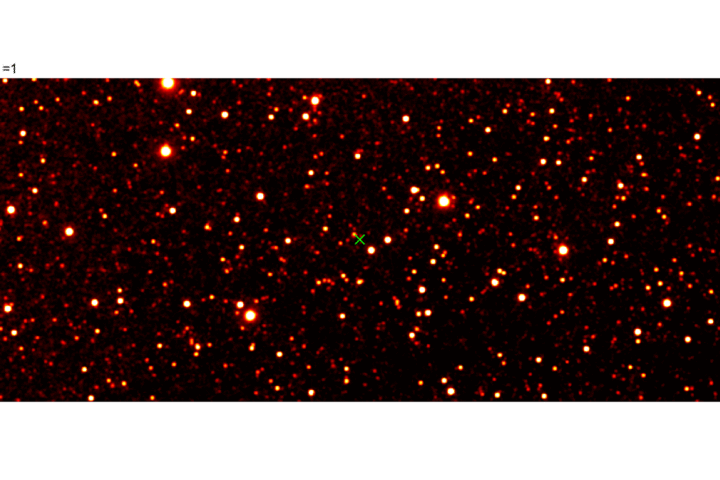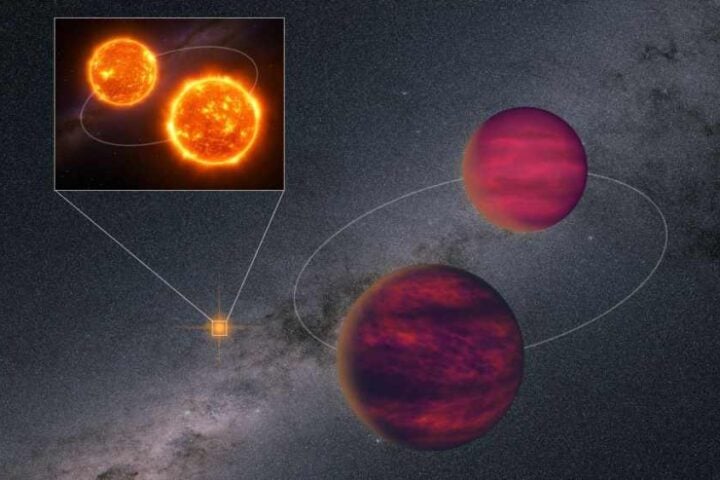Today, NASA tracked a rare celestial event as three asteroids cruised past Earth, with the largest measuring a whopping 1,300 feet across—roughly the size of an aircraft carrier. None posed any danger to our planet, but the cosmic close shave gives scientists a valuable opportunity to study these ancient space rocks up close.
The space visitors included asteroid 424482 (2008 DG5), approximately 320-700 meters wide, which passed Earth at 23:59 UTC at a distance of about 3.5 million kilometers (9 times the average lunar distance). Alongside it, two smaller rocks—2025 LD (73 feet) traveling at roughly 15,000 mph (6.7 km/s) and 2025 KY4 (42 feet) at 8,000 mph—passed at distances of 696,000 miles and 1.72 million miles respectively.
“The large asteroid passed Earth 15 times between 1956 and 2125. The approach in June 2025 will be the closest of them all,” explained Juan Louis Cano from ESA’s Planetary Defence Office. “However, at over nine times as far away as the Moon, even this pass is no cause for concern.”
Tracking Our Cosmic Neighborhood
The asteroid trio’s visit highlights NASA’s sophisticated tracking system for near-Earth objects (NEOs). The biggest visitor, 2008 DG5, was first spotted in 2008 by the Catalina Sky Survey in Arizona. It belongs to the Apollo group of asteroids and ranks among the top 3% of known NEOs by size. This Apollo-class PHA is currently being monitored by multiple telescopes worldwide, including the Virtual Telescope Project, which is hosting a live-stream for space enthusiasts starting at 22:00 UTC.
NASA’s Center for Near Earth Object Studies (CNEOS) constantly monitors the skies for potential threats. CNEOS classifies asteroids like 2008 DG5 as “potentially hazardous” not because they’re currently threatening Earth, but because their size and orbit meet specific criteria: they must be larger than 140 meters (460 feet) and have orbits that bring them within 0.05 astronomical units (about 7.5 million kilometers) of Earth’s path.
Today, astronomers track over 37,000 near-Earth objects, with about 2,465 classified as potentially hazardous. Most of these space rocks are too small to cause planet-wide damage, but even a modestly-sized asteroid could cause regional destruction if it hit Earth—which is why tracking them is crucial.
A Laboratory in Space
For scientists, close approaches like today’s flyby create perfect natural laboratories. When asteroids come relatively near Earth, researchers can study their composition, shape, and rotation using radar and optical telescopes.
“These flybys give us valuable data about asteroids without having to send spacecraft to visit them,” explains Dr. Paul Chodas, Director of CNEOS. “We can determine their size, shape, and even surface features during close passes.”
The information gathered helps scientists understand the early solar system and gives emergency planners crucial data about potential future hazards. Each observation refines our knowledge of these objects’ trajectories for decades to come.
Similar Posts
From Near Miss to No Threat: The Case of 2024 YR4
Today’s trio of harmless visitors comes just months after a more concerning situation with asteroid 2024 YR4. In February 2025, this asteroid reached a Torino Scale rating of 3—the second-highest rating ever assigned to an asteroid, indicating a need for attention from astronomers and public officials. At its peak, calculations showed a 3.1% chance of Earth impact in 2032.
However, as more observations came in, the risk assessment changed dramatically. By late February, the probability had dropped to 0.001%. By early April 2025, after observations from the James Webb Space Telescope measured its size at 174-220 feet (53-67 meters), NASA removed any chance of Earth impact in 2032. The asteroid now has a 4.3% chance of hitting the Moon instead.
The case illustrates how asteroid risk assessment works: initial uncertainty in measurements often leads to higher risk calculations that typically decrease as more observations refine our understanding of the object’s trajectory.
How NASA Measures Asteroid Danger
NASA uses two primary scales to rate asteroid threats. The Torino Scale, designed for public communication, uses numbers from 0-10 and color codes (white, green, yellow, and red) to indicate threat levels. Most asteroids, including today’s visitors, rate a 0, indicating “no hazard.”
For specialists, the more precise Palermo Scale compares an asteroid’s impact probability with the background risk of similar-sized objects. It considers the potential impact energy, probability, and time until possible impact. Values below -2 reflect “no likely consequences,” while anything above 0 indicates a situation warranting concern.
Although 2008 DG5 ranks among the largest 3% of known NEOs, its Torino Scale remains 0 and Palermo Scale well below –2, indicating effectively no impact risk for at least the next century.
Observing Tonight’s Visitors
Space enthusiasts can watch 2008 DG5’s journey via livestream from the Virtual Telescope Project. With an apparent magnitude near 20, viewing the asteroid directly requires at least a 12-inch telescope under dark skies.
The moon phase tonight will affect visibility, making professional tracking systems all the more valuable. Observations collected now will help astronomers predict future close approaches, including 2008 DG5’s next visit on September 18, 2032, at a distance of 0.099 AU.
For context, if an asteroid the size of 2008 DG5 were to hit Earth, the consequences would be catastrophic, unlike smaller objects like the 2013 Chelyabinsk meteor (66 feet) or even the 1908 Tunguska event (estimated 130 feet) which caused regional damage but not global effects.
The Future of Asteroid Detection
NASA’s planetary defense capabilities continue to improve. New tools like the upcoming NEO Surveyor space telescope, scheduled for launch in 2027, will significantly accelerate detection of 140m+ asteroids—targeting 90% catalog completeness—bolstering planetary defense capabilities.

The 2022 DART (Double Asteroid Redirection Test) mission successfully demonstrated that humans could alter an asteroid’s course if needed—a crucial capability should we ever discover an object on a collision course with Earth.
With each flyby, like today’s trio of space rocks, scientists refine their techniques and expand our understanding of these celestial visitors—making sure we’re prepared for whatever the cosmos might send our way next.
Today’s cosmic traffic jam of three asteroids passing Earth might seem concerning, but it actually demonstrates how well our planetary defense systems work. We’re getting better at finding, tracking, and understanding these ancient solar system travelers with each passing year—making sure that when it comes to asteroid threats, we’re never caught by surprise.
